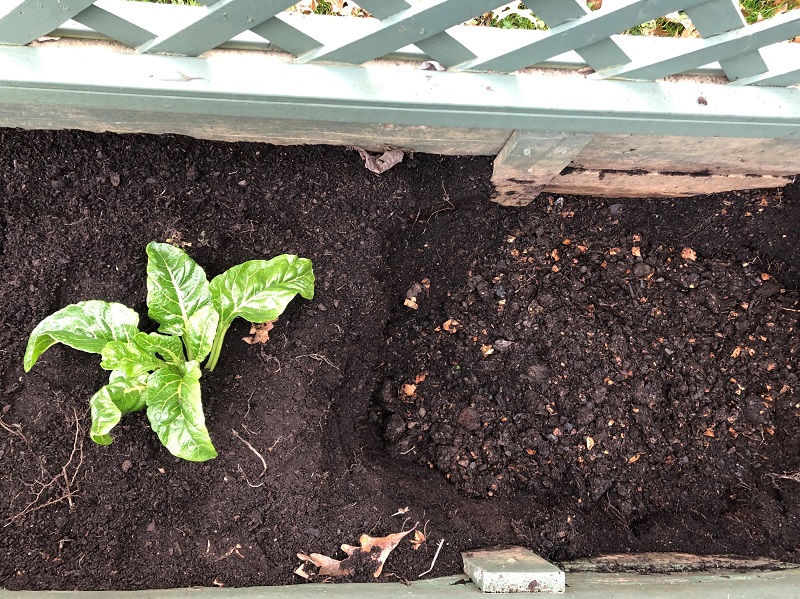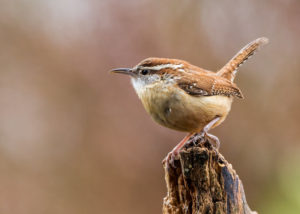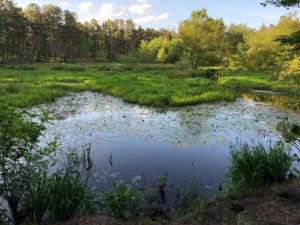Managing Anxiety About COVID-19: 9 Ways to Connect with Nature Without Leaving Home
With COVID-19 making its dreaded circumnavigation of the globe, governments and municipalities are introducing lock-down measures aimed at containing the virus. We know that the novel coronavirus has the potential to spread among people like the flu via close contact and respiratory droplets, so measures banning large gatherings, cancelling school, and directing employees to work from home are all designed to limit social contact and thus the spread of the virus. With non-stop news coverage on the new cases and with lock-down measures going into effect, it’s understandable to feel uncertain, apprehensive, and anxious. While some might find this forced isolation relieving if they do not have to report to work or send their child to school, others might feel trapped, suffocating under the relentless news cycle and fearful of cleaning supplies and food running out.
Being confined to our homes or apartments in this situation can cause intense feelings of anxiety about the unknown. We can turn to nature for a source of comfort in these times of uncertainty. In Pennsylvania’s Montgomery and Chester counties, many local parks are closing, although some trail systems remain open. People are encouraged to limit non-essential travel and stay home. What better place to look to nature at this time than in your own house or yard? Here are 9 ways to quell anxiety by connecting with the nature around your home.

1. Commune with the tree, the stalwart pillar of the forest
Trees grow tall and strong, firmly rooted in the earth to withstand passing storms. Many of us have trees in our backyard and if that’s the case for you, find one to sit under or climb into. If you don’t have access to a tree directly, you can sit in a quiet place, close your eyes, and imagine a large tree. The stout trunk towers overhead, stretching its long limbs into the sky. Its branches sway gently in the breeze and quiver with increasing winds. The roots, thick and fibrous, spread far and wide, anchoring itself within the soil. Picture yourself as this tree: You are grounded, connected to the nourishment you need from above – the rain, sunlight, the god you subscribe to – and supported from below by the soil life that stabilizes you and helps you grow – your friends, family, and community. Spend some time here in this place this weekend, whether physical or imagined, and allow the sense of trust and security to deepen knowing that you, like the tree, can weather the storm.

2. Work in the garden, outside or inside
COVID-19 can’t stop the sun from shining. If you have a yard, get outside in the fresh air and get some yard work done. Plenty of leaves and dead plants have accumulated over the winter. Yesterday I emptied my defunct compost pile into the bottom of my planter boxes and turned the soil, preparing for a fresh start. Collect dead leaves for rich brown compost material. Clear out the debris that has accumulated during winter. The sunlight and exercise will refresh your mind and feed your soul. If you don’t have a yard but have an apartment balcony, clean off the grime from months of stuff sitting outside and make the balcony inviting – warmer days are just around the corner. If you have indoor plants, give them some nurturing. Perhaps with all the commotion, your window plants need a drink. Or a haircut. I am overwintering a bell pepper plant indoors and gave him (or her?) a pruning to jump-start new growth. If you have some seeds that could be started indoors, plant them for the upcoming season. If you have none of these things on hand, work the garden mentally. Research some plants you want to add to your indoor and/or outdoor space. One of my friends is mapping out where she will plant her vegetables this year and preparing to add a new garden bed. Draw it out on paper.

3. Watch the birds
Birds are miraculous creatures, yet how often do they remain unnoticed around your house or work? Hang a few feeders and see who comes out of the “woodwork.” If you don’t have birdseed or feeders, just observe the birds that frequent your habitat – their activity is really ramping up with the warmth in the air. See how many species you can identify. Sit in a comfortable place and observe, resting your mind in the present moment. Be open to hear the chatter, squawks, chirps, and songs. Watch carefully for the rustling in the bushes and hopping on branches. Immerse yourself in the life outside your window instead of the cacophonous, anxiety-inducing television screen and cell phone. This winter I’ve made new friends in the garden – Carolina Wrens. I love everything about them, their squat, fat little bodies, long curving beaks, and striped tail that they brandish behind them. We have lots of bird species in southeastern Pennsylvania at this time of year, including woodpeckers, cardinals, starlings, blue jays, juncos, sparrows, finches, doves, and many more I can’t name. See who your feathered neighbors are.
4. Play with your animal(s)
Dogs, cats, birds, lizards, hamsters – each pet is a direct window into nature. Watch how your cat hunts toys or how your reptile eats insects. Wrestle with your pup on the floor or snuggle with him on the couch. Spend some time thinking about life from your pets point of view. How much simpler would life be? Talk to them and hold them, especially if you are feeling a little lonely or don’t want much interactions with humans at this time.

5. Plan a future camping or hiking trip
Research a scenic place for your next trip. It can be within driving distance if thinking about boarding a plane right now sours your stomach. Plenty of state parks and forests abound with opportunities. Check out the New Jersey Pine Barrens or hike a scenic section of the Appalachian Trail. Feel free to leave a comment if you are seeking more ideas – I have lots of suggestions that haven’t made their way into posts yet! Create a group chat or FaceTime friends and get a date on the calendar a few months ahead so you have something to look forward to.
6. Develop self-sufficiency and confidence by reducing your reliance on civilization
With the county-wide shutdown, people have raided the grocery stores, emptying them. Now what? Instead of letting this provoke anxiety, remember: we have shelter, power, running water, supermarkets are restocking food and we can still order food delivery. We have friends and neighbors that can bring us things if we need them. We are still safe. Use this example as a creative thinking exercise and start brainstorming – if the situation were different, how would you find food or water? Think about how you can reduce your reliance on the grid. Plan to grow some of your own food this year instead of relying on grocery store stocks. Herbs and vegetables can be grown in a sunny apartment window as well as in the garden outdoors. You don’t even need the sun if you have a grow light, but this also requires electricity. Maybe you can acquire some chickens, rabbits, or larger livestock like pigs or cows. Most of us cannot, but some lucky few can! Perhaps you can take up home food canning and preserve nutritious essentials for times when you might really need them. Start creating an emergency preparedness kit if you don’t have one already. I’m a backpacker, so I’m lucky enough to have dehydrated meals, stoves and gas canisters, and water purification on hand already, but this list has more items that we should have to be prepared. Teach yourself a new survival skill. Learn how to build a fire from a few twigs you find laying around and some matches (but do this outside in a controlled environment, like a fire pit). Practice building a makeshift shelter or tent out of materials you have on hand, like a tarp and some string. Kids love building forts, so if you have them, include them on this confidence-building activity. Once you are done, throw a picnic in your new fort! Allow this potentially scary scenario to be fun and informative and boost your feelings of security, self-reliance, and determination.
7. Draw an object in nature
Sit in front of a window and find a natural shape to draw, whether this be a flower, tree, bird, or blade of grass. Don’t judge yourself if you feel like you can’t draw, just give it a try and see what happens. Study the pattern of the bark, the shape of the leaves, the angle of the feathers, and allow yourself to become immersed in the object of your attention.

8. Start a food composter
If you’ve stocked up on food and happen to have fresh produce, set the scraps aside in a bin for composting. Food waste comprises the majority of municipal solid waste in the U.S. and only 5% of food waste is composted. The EPA estimated in 2013 that recycling and composting prevented the release of greenhouse gases into the atmosphere equivalent to taking 39 million cars off of the roads for one year! Similar estimates in the UK determined that removing food waste from landfills would reduce greenhouse gas release the same amount as removing one-fifth of UK cars. Research compost bins online – they come in all shapes and sizes. Whether you live on a farm or in an apartment, you can compost food to nurture your plants and avoid throwing stuff in the landfill. If you don’t have a yard or are limited on space, you can try vermicomposting (composting with worms) and feed the compost they generate back to your house plants. I’m currently testing a Bokashi food composting system, where food waste is fermented and then buried into the ground or compost pile for faster decomposition. The bin is indoors and creates no odor except a faint picking when opened (more to come in a future post!) Your municipality may have a food waste pick up program or you may have a friend or colleague that is willing to take your food scraps. One of my colleagues requested that our work coffee shop start collecting spent coffee grounds for her to fertilize her garden, and now she picks up close to 40 pounds a week!

9. Watch the stars
The super moon just occurred on March 9 and the new moon will occur on March 24. Set up a telescope if you have one or just watch from your house or balcony when the night skies are clear and see how many stars you can identify. Connect to the vastness of the universe, with its endless possibilities. Depending on where you live, light pollution will obscure some of the stars, but see what constellations you can pick out.
The best defense is a good offense, as they say, and one of the best ways to avoid getting sick is to keep your body and mind healthy. We can prioritize sleep, drink copious non-alcoholic beverages, and take time to prepare nutritious meals. Despite gyms closing, we can exercise at home using body weight moves like push ups, sit ups, pull ups, or running on the treadmill if you have one. Exercise boosts the immune system and helps quiet the anxious mind. Remember to follow the guidance given by your local officials and the CDC – wash your hands for at least 20 seconds (really make sure to scrub all parts!), wipe down surface frequently like your dirty phone, door handles, and counter tops, avoid touching your face, eyes and nose if you do go out in public and avoid crowded spaces, maintaining a 6 foot distance between other people.
I hope these ideas help you feel more grounded in this uncertain time. Share what you tried and how you felt afterwards in the comments. Stay safe and healthy, folks!

6 Replies to “Managing Anxiety About COVID-19: 9 Ways to Connect with Nature Without Leaving Home”
Thanks Ashley! I only worked through item 1 so far and with tears of relief I can say it has helped me!
I’m so glad it helped, Ellen!!
Wonderful article. I have done this for my depression and anxiety for years. Nature is the key. Sit and just look around Gods country. Check out the sky. Clouds make pics and just close your eyes and dream. Always think good thoughts and remember “this too will pass.
Thanks, Diane! Nature is really such a gift, isn’t it? Great advice!
Thank you!
You are welcome! Hope it helped!!